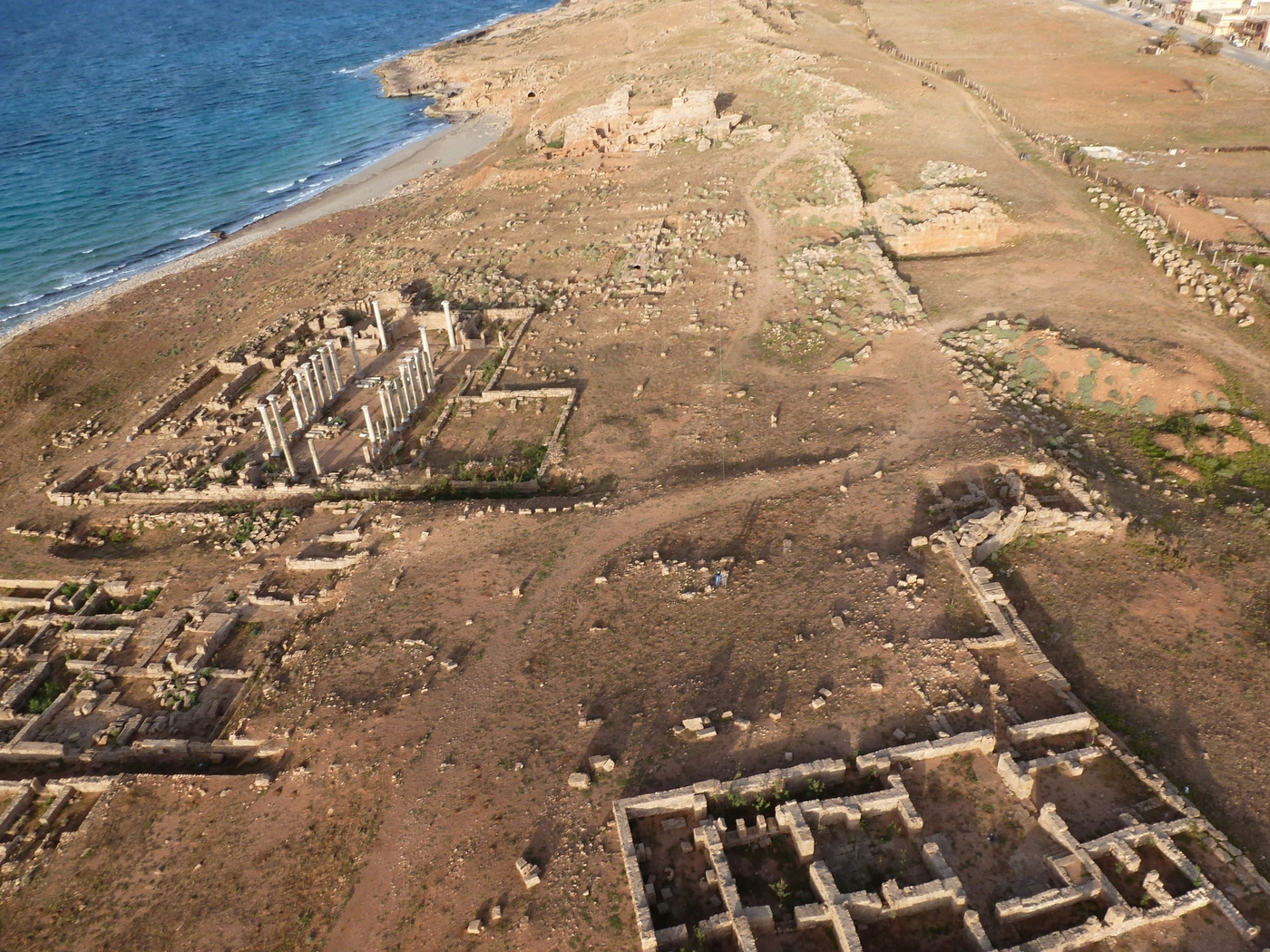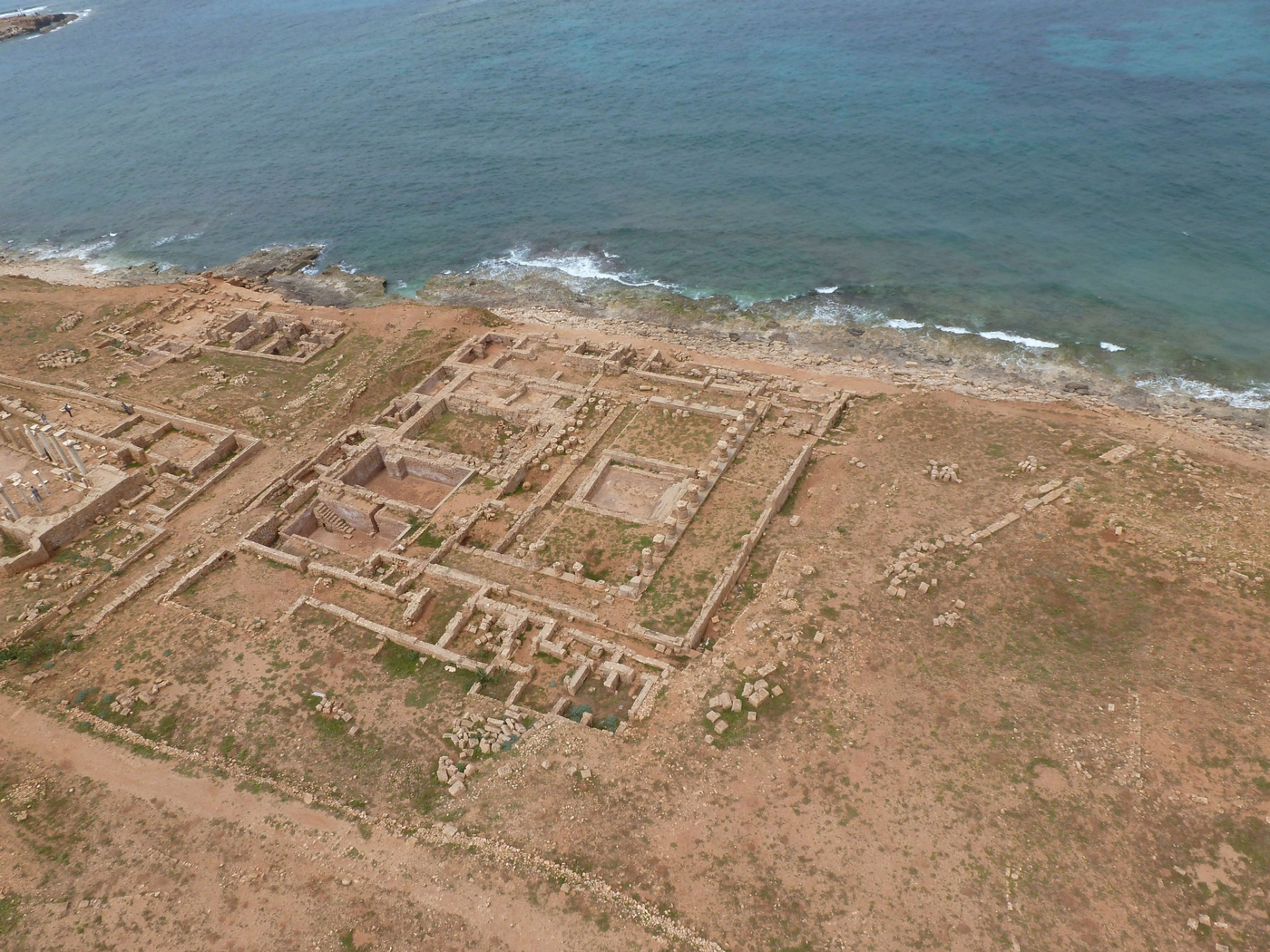Apollonia-Susa
Initially a small port called Cyrene, Apollonia gained its independence at the end of the Hellenistic period to become one of the five cities of ancient Cyrenaica. Excavated from the end of the Second World War, it has been studied by the French archaeological mission in Libya since 1976.

The mission spent many years studying the baths, ramparts and primarily the port, by carrying out underwater excavations from 1986. Since 2002, research has focused on a rocky area known as the “Kallikrateia", which derives its name from a Greek inscription on a rock altar, between the lower city and the acropolis.
Kallikrateia
A group of 19 rock altars was discovered along with a large collection of religious artefacts dating from the 4th and 3rd centuries BCE, providing further evidence for a contemporary religious area. A partially troglodytic building was also uncovered with three adjoining rooms (late 2nd century - early 1st century BCE), probably with a votive or sacrificial function. The base of the rock was a terrace dating from early in the reign of Augustus, probably supporting a building, while the northern sector had a service building dating from the late 1st century CE. A Byzantine-period house stood on the rock side, while extensive evidence of Byzantine, Arab and Italian occupation layers was found in the western sector.
All evidence points to the partial abandonment of the site in the 7th century CE, with some traces of occupation up to the Arab conquest.
Safeguarding, conservation and ongoing research
Rescue archaeology has become a priority to address the threat from marine erosion (a third of the ancient city is already under water) and property development near the western necropolis. In 2012, several groups were revealed during rescue excavations and conservation work, including three hypogea and some twenty rectangular tombs in the necropolis, and mosaic pavements. Following the suspension of the excavations, multiple studies are being made of the archaeological artefacts, including the IGCyr project which aims to bring together a corpus of Greek inscriptions from Cyrenaica, managed by Catherine Dobias and Hugues Berthelot.
The research team
The French archaeology mission in Libya was founded in 1976 by François Chamoux, and resumed in 1981 by André Laronde. Following his death, Vincent Michel took over the mission in 2011. Initially focused on the Greek-Roman period (also in Leptis Magna), it has constantly expanded its field of research into Late Antiquity (Erythron-Latrun) and Prehistory (Abu Tamsa). The complex security situation has shifted the focus to strengthening cooperation between the French and Libyan teams, with training in archaeology, archaeometry and conservation techniques, and post-excavation work.
Supported by the French Ministry for Europe and Foreign Affairs on the advice of the Excavations Board, the mission works to combat the theft and illicit trafficking of cultural property, which is one of the priorities of the French Ministry of Culture.
Learn more:
- The webpage of the Research centre on Ancient Libya
- The Mission on the website of the French Ministry for Europe and Foreign Affairs





